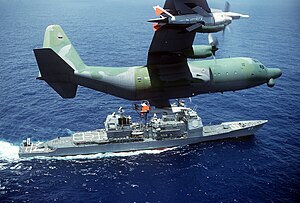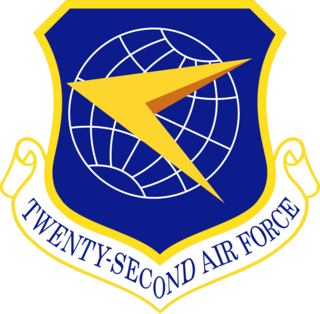
Twenty-Second Air Force is a Numbered Air Force component of Air Force Reserve Command (AFRC). It was activated on 1 July 1993 and is headquartered at Dobbins Air Reserve Base, Georgia.
The Army Air Forces Tactical Center was a major command and military training organization of the United States Army Air Forces during World War II. It trained cadres from newly formed units in combat operations under simulated field conditions around which new combat groups would be formed. It was established as the Army Air Forces School of Applied Tactics (AAFSAT) in 1942 and redesignated the following year.
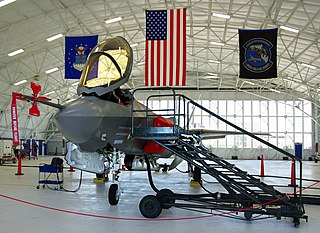
The 46th Test Wing is an inactive wing of the United States Air Force last based at Eglin Air Force Base, Florida. The wing's 46th Test Group was a tenant unit at Holloman Air Force Base, New Mexico.
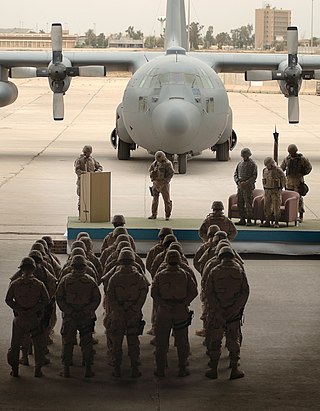
The 370th Air Expeditionary Wing (AEW) is a provisional United States Air Force unit assigned to United States Air Forces Central, which may activate or inactivate it at any time. The unit was last stationed in Iraq, and was likely inactivated in 2011 as part of the United States pullout of forces.

The United States Air Force's 7th Space Operations Squadron is an Air Force reserve space operations unit located at Schriever Air Force Base, Colorado.
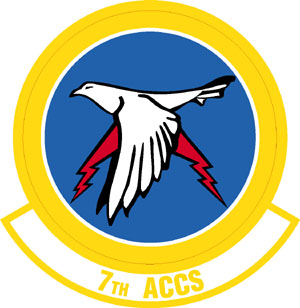
The 7th Expeditionary Airborne Command and Control Squadron is part of the 379th Air Expeditionary Wing at Al Udeid Air Base, Qatar. It operates the E-8 Joint STARS aircraft, conducting airborne command and control missions. The squadron has performed the airborne command and control mission since 1968, when it was activated in Vietnam. In 1985, the squadron was consolidated with three earlier units: The 7th Ferrying Squadron, which helped deliver aircraft to the Soviet Union from 1942 until 1944; the 7th Combat Cargo Squadron, which performed combat airlift missions in the Southwest Pacific Theater from 1944 until V-J Day, then became part of the Occupation Forces in Japan until inactivating in 1948; and the 7th Air Transport Squadron, Special, which provided airlift support for the United States' special weapons program from 1954 to 1966.

The 11th Airlift Squadron is an inactive United States Air Force unit. It was most recently part of the 375th Airlift Wing as Scott Air Force Base, Illinois. It operated McDonnell Douglas C-9 Nightingale aircraft conducting medical evacuation missions.

The 336th Air Refueling Squadron is a United States Air Force Reserve squadron, assigned to the 452d Operations Group, stationed at March Joint Air Reserve Base, California. The squadron shares its aircraft and facility with the 912th Air Refueling Squadron, a USAF Associate Unit assigned to the 92d Air Refueling Wing.
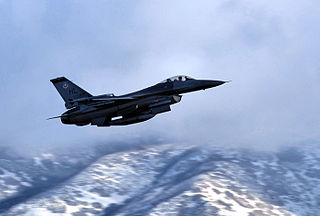
The 514th Flight Test Squadron is a squadron of the United States Air Force, which has been stationed at Hill Air Force Base, Utah since 1973, performing functional flight checks on aircraft undergoing major maintenance.

The III Reconnaissance Command is a disbanded United States Army Air Forces unit. Its last assignment was with Third Air Force stationed at Rapid City Army Air Base, South Dakota, where it was inactivated on 8 April 1946. After transferring to the United States Air Force in September 1947, it was disbanded in October 1948.

The 313th Expeditionary Operations Group is a Provisional United States Air Force unit, assigned to United States Air Forces in Europe to activate or inactivate as needed. It was last active at Moron Air Base, Spain, supporting Operations Odyssey Dawn and Unified Protector to enforce a no-fly zone over Libya. It was inactivated on 31 October 2011.

The 2nd Troop Carrier Squadron is an inactive United States Air Force unit. It was last active in the reserve with the 65th Troop Carrier Group at Mitchel Air Force Base, New York where it was training with Curtiss C-46 Commandos. It was replaced by another unit, which absorbed its resources on 1 April 1953.

The 329th Armament Systems Group is an inactive United States Air Force unit, last assigned to the Air Armament Center at Eglin Air Force Base, Florida. It was inactivated in 2007.

The 10th Airborne Command and Control Squadron is an inactive United States Air Force unit that flew airborne command post aircraft from RAF Mildenhall, England from January 1970 to December 1991. Through a unit consolidation in September 1985, the squadron has roots in units that participated in World War II, the Korean War and the Vietnam War

The 12th Aeromedical Airlift Squadron in an inactive United States Air Force unit. From 1956 through 1969, it flew aeromedical evacuation missions from McGuire Air Force Base. In 1985, the squadron was consolidated with two World War II units, but remained inactive. The consolidated squadrons were the 12th Ferrying Squadron, which ferried aircraft to Europe and from factories to flying units from 1942 and 1944; and the 162d Liaison Squadron, which tested equipment and developed tactics for liaison units between 1944 and 1946.

The 517th Training Group is a group of the United States Air Force. It conducts language training and is assigned to the 17th Training Wing at Goodfellow Air Force Base, Texas. It is stationed at the Presidio of Monterey, California. It was activated in its present form on 14 May 2009. During World War II, the group was the 7th Ferrying Group, ferrying combat aircraft from factories in the United States to Alaska for onward transfer to the Soviet Union via the ALSIB air route.

The 2nd Aircraft Delivery Group is an inactive group of the United States Air Force (USAF). While it was established in 1969—as a continuation of USAF's ferrying mission dating back to 1948—it also constituted the reactivation of a unit first established as the Northeast Sector, Air Corps Ferrying Command in February 1942. As the 2nd Ferrying Group, it was the first regular U.S. Army unit to employ the Women's Auxiliary Ferrying Squadron pilots, who flew all models of aircraft until that group was disbanded in 1944. Its role was to deliver aircraft to combat units. It was made inactivate in June 1994.

The 6th Ferrying Group was a World War II unit of the United States Army Air Forces (AAF). It was activated in February 1942 as the California Sector, Ferrying Command in February 1942, but soon changed its name. It ferried aircraft manufactured in California until March 1944, when it was disbanded in a general reorganization of AAF units in the United States. It was replaced by the 556th Army Air Forces Base Unit, which continued its mission until late in 1946.

The 3rd Ferrying Group was a World War II unit of the United States Army Air Forces (AAF). It was activated in February 1942 as the Detroit Sector, Ferrying Command in February 1942, but soon changed its name. It ferried aircraft manufactured in the midwest until March 1944, when it was disbanded in a general reorganization of AAF units in the United States. It was replaced by the 553rd Army Air Forces Base Unit, which continued its mission until spring 1947.

The 4th Ferrying Group was a World War II unit of the United States Army Air Forces (AAF). It was activated in February 1942 as the Nashville Sector, Ferrying Command, but soon changed its name. It ferried aircraft manufactured in the midwest and south until March 1944, when it was disbanded in a general reorganization of AAF units in the United States. It was replaced by the 554th Army Air Forces Base Unit, which continued its mission until spring 1947.
